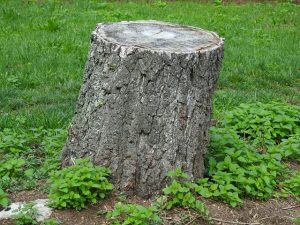Where Did the Free Chipping Tree Services Go?
Where Did the Free Chipping Tree Services Go?
In the town of High Wycombe and its surrounding areas, residents used to benefit from free chipping tree services offered by the council or local tree service companies. These services provided a convenient and environmentally friendly way to dispose of tree branches, wood chips, and other tree-related debris. However, in recent years, the availability of such services has decreased, leaving many residents wondering where these valuable resources went. In this article, we will explore the reasons behind the disappearance of free chipping tree services and discuss alternative options for managing tree waste in the area.
The Importance of Tree Services:
Tree services play a vital role in maintaining the health and beauty of the urban landscape. Regular tree care, including pruning, trimming, and removal, is necessary to ensure the safety of properties and the well-being of the community. As part of these services, the chipping of tree branches and wood provides an efficient way to manage the waste generated from tree maintenance and removal.
Decline of Free Chipping Tree Services:
a. Cost and Budget Constraints: One of the primary reasons for the decline in free chipping tree services is the cost associated with providing these services. As municipal budgets tighten and resources become scarce, local councils and tree service companies often need to prioritize essential services over free chipping programs.
b. Increased Demand and Workload: The growing population and urban expansion in areas like High Wycombe have led to an increased demand for tree services. This surge in workload makes it challenging for service providers to offer free chipping services, as it requires additional manpower, equipment, and time.
c. Waste Disposal Regulations: Stringent waste disposal regulations imposed by local authorities and environmental agencies can also impact the availability of free chipping tree services. Compliance with these regulations may require costly permits, certifications, and proper disposal methods, making it financially unfeasible for service providers to offer free chipping programs.
d. Shift in Priorities: Some councils and tree service companies may have shifted their focus from offering free chipping services to other aspects of tree care, such as tree preservation, disease control, and emergency response. This shift in priorities reflects a need to allocate resources where they are most urgently required.
Alternative Options for Tree Waste Management:
While the disappearance of free chipping tree services is unfortunate, there are still alternative options for residents to manage tree waste in an efficient and sustainable manner:
a. Hire Professional Tree Services: Engage the services of local tree service companies that offer chipping and removal as part of their paid services. Although there is a cost associated with hiring professionals, it ensures that the tree waste is properly handled and disposed of, following all waste management regulations.
b. Community Chipping Programs: Explore the possibility of organizing community chipping programs in collaboration with local councils or tree service companies. These programs can be scheduled periodically, allowing residents to bring their tree branches and wood chips to a designated collection point where they will be chipped and recycled.
c. Composting and Mulching: Rather than disposing of tree waste, consider composting or mulching it for use in gardens and landscaping projects. Chipped wood and branches make excellent mulch, providing moisture retention, weed suppression, and soil improvement. This sustainable practice reduces waste and enhances the health of the soil.
d. Self-Disposal: For small amounts of tree waste, residents can invest in a wood chipper or rent one from a local equipment rental company. This option allows for chipping the branches and using the wood chips as desired, such as ground cover or mulch in the garden.
Importance of Responsible Waste Management:
Regardless of the availability of free chipping tree services, it is essential for residents to prioritize responsible waste management practices. Improper disposal of tree waste, such as dumping it in landfills or on public property, not only damages the environment but may also violate local regulations.
By embracing alternative options and taking proactive steps to manage tree waste responsibly, residents can contribute to the overall well-being of their community and the preservation of natural resources.
Conclusion:
While the availability of free chipping tree services has declined in High Wycombe and its surrounding areas, there are still viable options for residents to manage tree waste responsibly. Hiring professional tree services, organizing community chipping programs, composting and mulching, and self-disposal through wood chippers are all practical alternatives. It is important for individuals to understand the value of responsible waste management and to contribute to the preservation of the environment. By adopting sustainable practices, residents can ensure the proper disposal of tree waste and contribute to the overall health and beauty of their communities.
[geocentric_weather id=”45ff4ccd-3d3f-498e-b0b9-91aaaf766bc4″]
[geocentric_about id=”45ff4ccd-3d3f-498e-b0b9-91aaaf766bc4″]
[geocentric_neighborhoods id=”45ff4ccd-3d3f-498e-b0b9-91aaaf766bc4″]
[geocentric_thingstodo id=”45ff4ccd-3d3f-498e-b0b9-91aaaf766bc4″]
[geocentric_busstops id=”45ff4ccd-3d3f-498e-b0b9-91aaaf766bc4″]
[geocentric_mapembed id=”45ff4ccd-3d3f-498e-b0b9-91aaaf766bc4″]
[geocentric_drivingdirections id=”45ff4ccd-3d3f-498e-b0b9-91aaaf766bc4″]
[geocentric_reviews id=”45ff4ccd-3d3f-498e-b0b9-91aaaf766bc4″]
